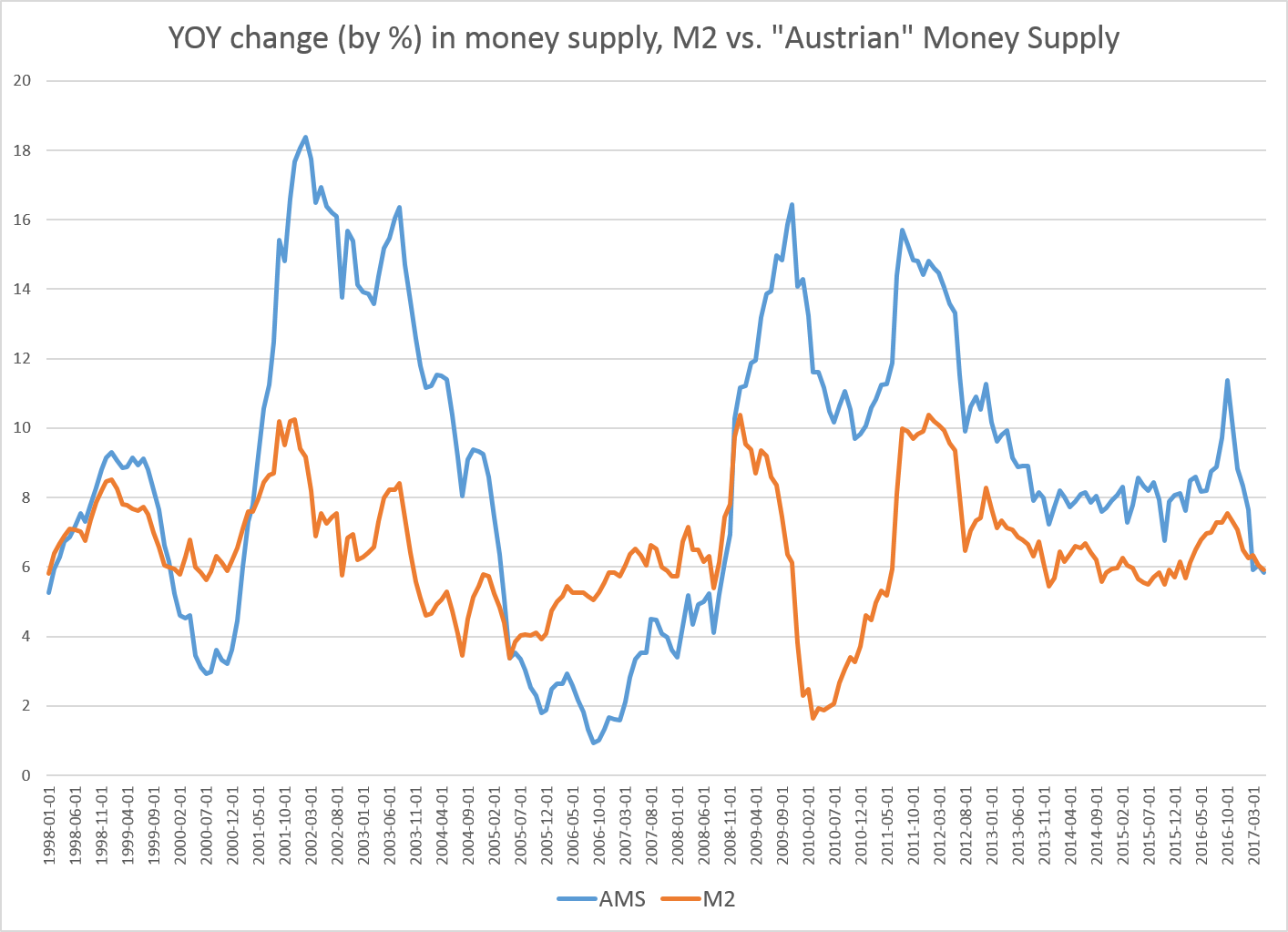Growth in the supply of US dollars fell again in May, this time to a 105-month low of 5.4 percent. The last time the money supply grew at a smaller rate was during September 2008 — at a rate of 5.2 percent.
The money-supply metric used here — an “Austrian money supply” measure — is the metric developed by Murray Rothbard and Joseph Salerno, and is designed to provide a better measure than M2. The Mises Institute now offers regular updates on this metric and its growth.
The “Austrian” measure of the money supply differs from M2 in that it includes treasury deposits at the Fed (and excludes short time deposits, traveler’s checks, and retail money funds).
M2 growth also slowed in May, falling to 5.6 percent, a 20-month low.

Money supply growth can often be a helpful measure of economic activity. During periods of economic boom, money supply tends to grow quickly as banks make more loans. Recessions, on the other hand, tend to be preceded by periods of falling money-supply growth.
Thanks to the intervention of central banks, of course, money supply growth in recent decades has never gone into negative territory.
Nevertheless, as we can see in the graph, significant dips in growth rates show up in years prior to a economic bust or financial crisis.
For insights into what’s affecting money supply growth, we can look at loan activity, such as the Federal Reserve’s measure of industrial and commercial loans.
In this case, we find that the growth rate in loans has fallen to a 74-month low, dropping to 1.9 percent. Loan growth has not been this weak since April of 2011, in the wake of the last financial crisis.

We find similar trends in real estate loans and in consumer loans, although not to the same extent.


The current subdued rates of growth in the money supply suggests an economy in which lenders are holding back somewhat on making new loans, which itself suggests a lack of reliable borrowers due to a lackluster overall economy. This assessment, of course, is reinforced by the Federal Reserve’s clear reluctance to wind down it’s huge portfolio, and to end its ongoing policy of low-interest rates — concerned that any additional tightening might lead to a recession.


